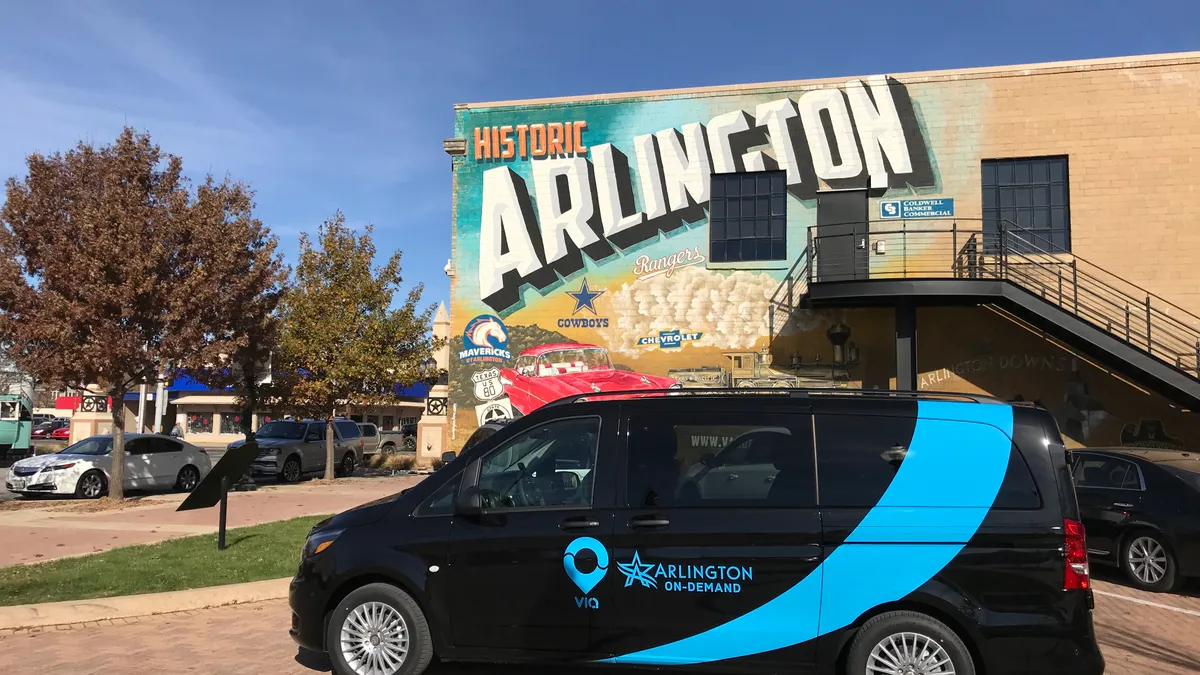Dive Brief:
-
Honolulu, New Orleans and Nashville, TN are the top U.S. cities that could benefit the most from micromobility solutions, according to a new report from INRIX.
-
The group analyzed more than 50 million car trips and found that 48% of trips in the most congested U.S. metro areas are under three miles. If a fraction of those trips were replaced by shared bikes and scooters, cities would experience less traffic congestion, reduced emissions and a boost to the local economy, according to the research group.
-
Chicago; Charlotte, NC; New York City; Portland, OR; Pittsburgh; Los Angeles and San Francisco also rank among the top 10 U.S. cities that could benefit the most from micromobility. "Automobile-centric sunbelt cities" like Dallas and Phoenix would benefit the least, the report says.
Dive Insight:
Shared micromobility devices could thrive in a city like New York where individuals are encouraged to get out of their cars due to impending congestion pricing tolls and an expansion of protected bike lanes, according to the report.
But biker and pedestrian safety remain a major issue in U.S. cities. Pedestrian deaths in 2018 reached their highest level in 30 years, and New York City Mayor Bill de Blasio recently acknowledged the city's 17 cyclist deaths this year are a "crisis," prompting a new cyclist infrastructure and safety plan.
Therefore, the most effective way to get people to use micromobility devices is to make them easy and safe to use, INRIX Transportation Analyst Trevor Reed told Smart Cities Dive in an email.
"Cars are popular due to their flexibility and comfort," Reed said. "To entice drivers out of their vehicles and onto bikes/scooters, the experience needs to be superior than that of driving. Good coverage and a network of protected lanes are the most powerful steps forward."
The benefits of micromobility devices include low operating costs and faster trip times. Scooters are often faster than cars in congested parts of the city, and can save users from finding parking spots or storing their device on public transit, according to Reed.
However, the devices have also proven to be a headache for government officials. City transit has become increasingly complicated with the rapid introduction of new micromobility solutions. To maximize the potential benefits of micromobility solutions for short distance and first- and last-mile trips, cities need a clear picture of how people move through their streets, according to the research group.
To help with that understanding, the group expanded its Road Rules platform in July to provide a common platform for cities to digitize, manage and communicate rules for roads, sidewalks and curb space. The open platform also includes features to show bike lanes and pick-up/drop-off areas for dockless scooters and bikes.
"Given the tumultuous roll-out of micromobility services in many markets, regulating their parking, speed, and permitted areas of operation is critical," Reed said. "Road Rules offers a means for cities to manage micromobility in a systematic manner, decreasing conflicts with pedestrians, vehicles, and businesses. In order to realize micromobility's potential, it will require community buy-in."












